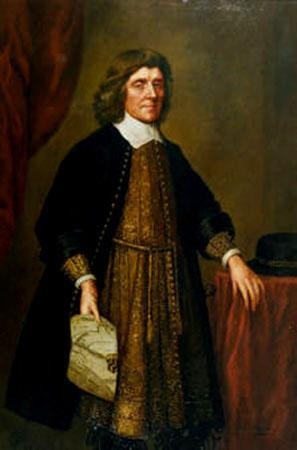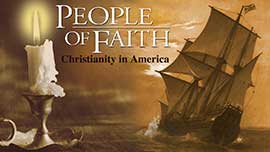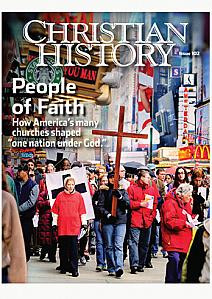MARYLAND WAS FOUNDED TO PROTECT CATHOLIC FAITH

[Above: Florence MacKubin (1857–1918), Cecil Calvert, Second Lord Baltimore—Maryland State Archives / public domain, Wikimedia]
TWO SMALL WOODEN SHIPS, the Ark and the Dove, sailed from the Isle of Man on this day, 22 November 1633. Soon the wind failed, so they sheltered in Yarmouth harbor to await a breeze. A storm came up that night and a French ship dragged its anchor, bearing down upon the Dove. The little ship had to run to sea to escape collision. The Ark joined her so they could stay together. However, they were separated a few days later in a storm. The Dove flashed two lanterns to show she was in trouble and disappeared from sight.
Outfitted by Cecil Calvert, the Second Lord Baltimore, the Ark and Dove were to settle a new American colony—the Province of Maryland. Baltimore named the colony for Queen Henrietta Maria. He appointed his brother Leonard as its first governor.
Maryland was Baltimore’s to colonize because of the faithful service of his father to the English crown. Lord Baltimore was leaving little to chance. He had studied previous colonization attempts and was determined to avoid their mistakes. He made careful provision for the settlers and dispatched them on their way in winter so that they would arrive in Spring with ample time to plant crops before the next cold season. Enjoying warm weather, they would not have to rush the construction of houses to the neglect of planting and other important tasks. Having struggled against cold in an earlier venture in Newfoundland, Lord Baltimore hoped the warmer climate of Maryland would allow the transplanted English people to flourish.
In the Caribbean, the Ark paused to repair damage. Looking up one day, the small party shouted in joy. There was the Dove, intact and able to join them to complete the voyage. Between them, the two ships carried about two hundred settlers, although the number is hotly debated because the names of servants were not recorded.
Nervously, the voyagers sailed to Virginia. Virginians had little reason to welcome them, for Virginia claimed the area that King Charles I had carved out for Maryland. As Church of England believers, they were also suspicious of the Catholics. Nonetheless, Captain Henry Fleet, who knew the local language, accompanied them as an interpreter. Once the Marylanders decided where they wanted to build, Fleet negotiated purchase of the land. Later, however, he turned against the colony.
The colonists built their first town, St. Mary’s City, along the Chesapeake Bay. There they undertook enterprises to repay the investors who had financed their venture. But Baltimore, a Roman Catholic, was less interested in the colony as a speculative venture than as a refuge for fellow Catholics, who had been persecuted in England since the Reformation era. Aboard the ship were two Jesuit priests. One of them, Father Andrew White, wrote an account of the voyage, the initial settlement, and of the Jesuits' efforts to win converts among Native Americans and Protestants. He and successive chroniclers recounted some success and many miracles.
The colony’s charter promised religious freedom for Catholics. As only seventeen of the original settlers were Catholic, this was an essential protection. In 1649, An Act Concerning Religion (the Maryland Toleration Act) guaranteed freedom of worship to all Trinitarian Christians. This early effort at religious liberty was an important step toward freedom of religion in the United States.
—Dan Graves
----- ----- -----
For more on the Christians who planted their faith in America, or watch People of Faith at RedeemTV
People of Faith can be purchased at Vision Video.
read Christian History #102, People of Faith
----- ----- -----
Contemplate the story of the Incarnation day-by-day throughout the season of Advent in our latest publication, The Grand Miracle. Based on the writings of C. S. Lewis, J.R.R. Tolkien, George MacDonald, Dorothy Sayers, and others, each day’s reading offers a fresh look at the birth of Christ through the eyes of a modern author. Scripture, prayer, and full-page contemplative images complete each entry. 28 days, 64 pages. Preview the Devotional here.









